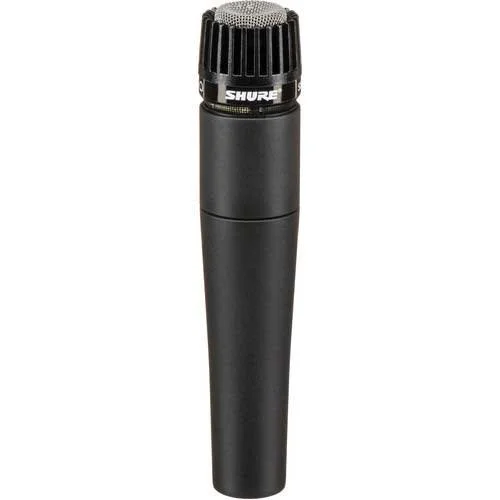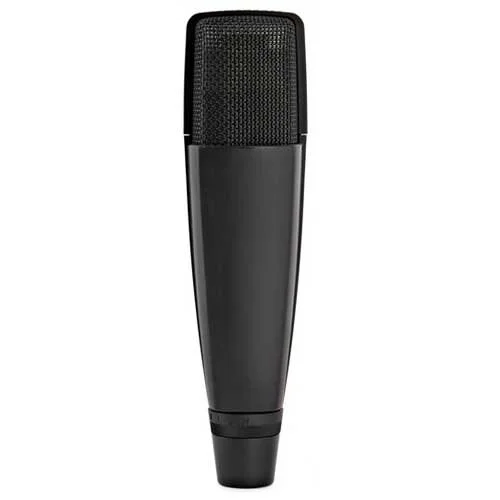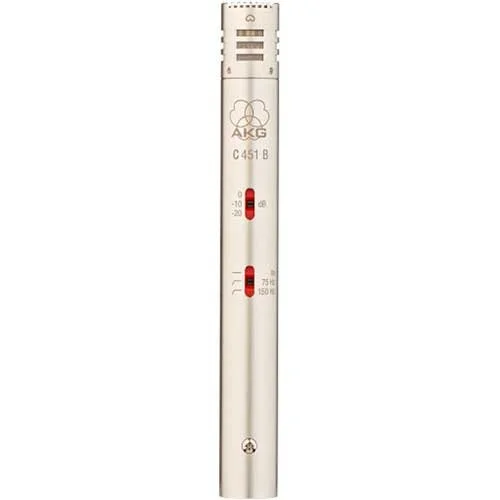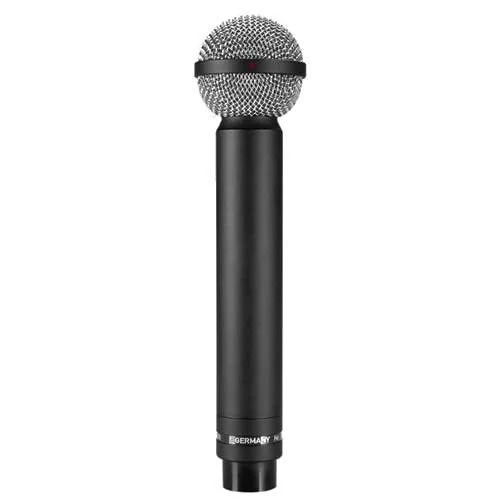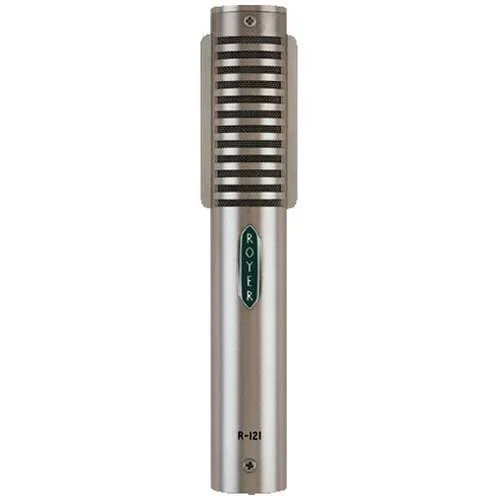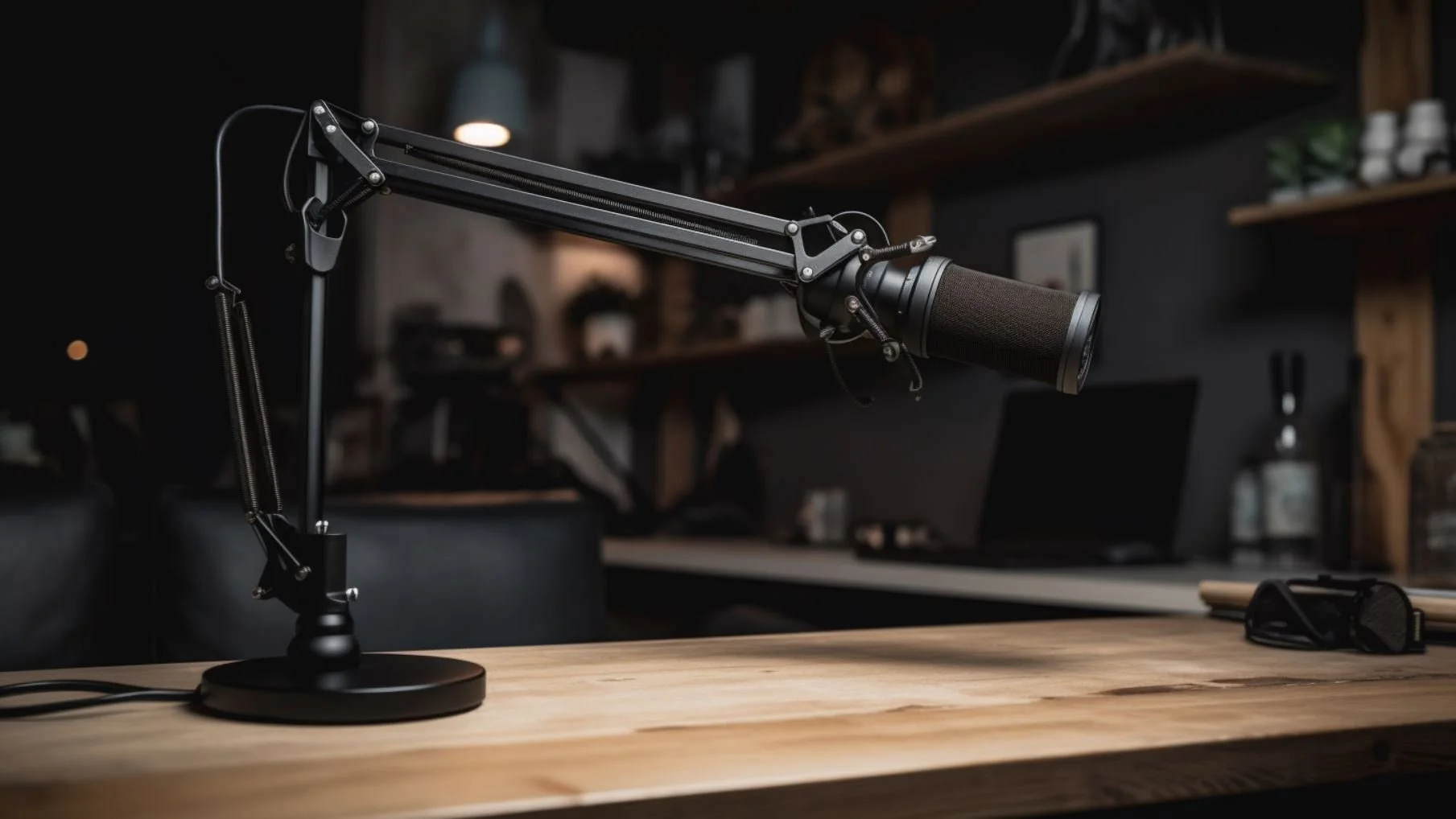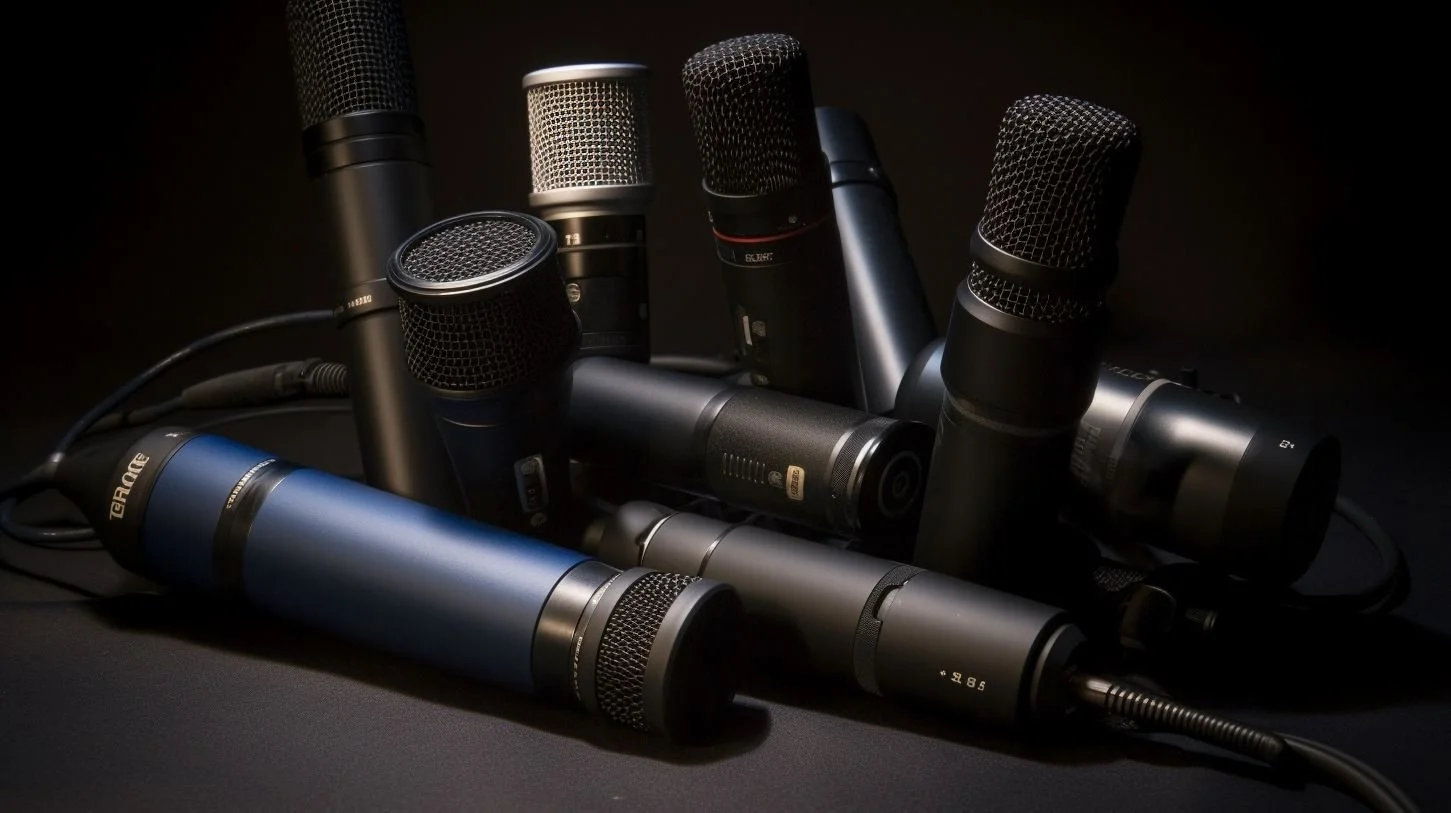Best Microphone for Recording Acoustic Guitar
Strumming to Success: Unveiling the Perfect Microphone for Your Acoustic Guitar Sound
In the realm of music production, few instruments possess the organic allure and sonic richness of the acoustic guitar.
Its delicate harmonies, intricate fingerpicking, and resonant tones have the power to captivate listeners and evoke a spectrum of emotions.
Whether strummed gently by a folk troubadour or fingerpicked with precision by a virtuoso, the acoustic guitar holds a special place in the hearts of musicians and audiences alike.
However, capturing the essence of this beloved instrument in a recording studio can be a delicate art.
From the subtle nuances of each string vibration to the reverberations bouncing off the studio walls, every element plays a role in shaping the final sound.
And at the heart of it all lies the microphone—the conduit through which the soul of the acoustic guitar is translated into the digital realm.
In this comprehensive guide, we delve into the world of microphones to uncover the best tools for capturing the beauty of acoustic guitar performances.
Whether you're a seasoned recording engineer or a budding musician setting up your home studio, choosing the right microphone is paramount to achieving professional-quality recordings.
Join us as we explore the nuances of dynamic, condenser, and ribbon microphones, and discover the perfect match for your acoustic guitar sound.
Disclaimer: This blog post contains affiliate links. If you make a purchase through one of these links, I may receive a small commission at no additional cost to you. This helps support my work and allows me to continue providing valuable content. Thank you for your support!
! READ BEFORE BUYING !
There are a TON of microphones available that sound great on acoustic guitars.
To help narrow down your search, select the microphone type that will sound best in your recording environment.
Microphone Types:
1. Dynamic
Dynamic microphones are affordable, don’t require phantom power, nearly bulletproof, and are the best choice for noisy, untreated rooms.
Have noisy neighbors, road traffic, and barking dogs? The low-sensitivity design of dynamic microphones will help keep those distractions from being recorded and intruding on your mix.
As a tradeoff, dynamic microphones often don’t record sounds above 15kHz. Additionally, because dynamic mics aren’t as sensitive as condenser mics, they won’t capture the subtle nuances of your playing with as much clarity and detail as a condenser mic.
Pros
- Affordable
- Less likely to pickup background noises
- Extremely durable
Cons
- Limited frequency response
- Lack transient detail
2. Condenser (Small Diaphragm)
Small diaphragm condenser mics are great for capturing every nuanced detail with stunning clarity in a small, lightweight package.
They’re best used in controlled studio spaces with acoustic treatment and soundproofing. Otherwise, they will record every barking dog, passing car, and overhead jet due to their high sensitivity.
If your recording environment is noisy, choose a dynamic microphone.
Pros
- Extremely sensitive
- Small
- Lightweight
- Great sounding options for any budget
Cons
- Will pick up every background noise
3. Condenser (Large Diaphragm)
A larger diaphragm means lower self-noise and increased sensitivity.
Since acoustic guitars are quite loud, a lower self-noise floor isn’t that important (learn more about self-noise here). However, increased sensitivity over small diaphragm condensers will capture more subtle details.
This makes large diaphragm condensers one of the best choices far high-fidelity recordings.
However, they have the same drawback of small diaphragm condensers (record distant background sounds).
Additionally, large diaphragm condenser mics tend to be heavy, and may require more expensive mounting solutions than their smaller diaphragm counterparts.
Pros
- Extremely sensitive
- High-fidelity
- Low noise
- Great sounding options for nearly any budget
Cons
- Will pick up every background noise
- Heavy
4. Ribbon
Ribbon microphones are the best choice for recording the most accurate rendition of your playing.
Renowned for their natural sound and excellent transient response, ribbon mics delicately capture the rich harmonic content and subtle nuances of acoustic instruments.
Transient response time measures how quickly a microphone can respond to changes in sound intensity and frequency. Ribbon mics have the fastest transient response of any microphone, allowing for accurate capture of the rapid sound characteristic changes of acoustic guitar playing.
With a gentle high-frequency roll-off and smooth off-axis response, they provide a balanced and detailed representation of the instrument's tonality and dynamics.
However, their fragility and lower sensitivity require careful handling and pristine preamps.
While offering exceptional sonic character, their cost may be restrictive to all but serious acoustic guitar professionals.
Pros
- Natural sound
- High frequency roll-off reduces harshness
- Excellent transient response
Cons
- Expensive
- Fragile
Dynamic Mics for Acoustic Guitar
Top Recommendation
An industry legend and one of the best-selling mics of all time. Renowned for its versatility, the SM57 sounds great on virtually anything, including acoustic guitar.
Premium Option
A staple in the music industry. Used on hundreds of famous albums. Has a wider frequency response than SM57 for more detail and increased fidelity.
Small Diaphragm Condenser Mics for Acoustic Guitar
Best Budget
An affordable option that sounds great on acoustic guitar. Includes 10dB pad and a highpass filter.
Best Value
An acoustic guitar standard since 1978. The fact that Shure still makes it is a testament to its reliability and popularity.
Best Overall
An upgraded version of the legendary C451 from 1969 with better specs. Used on countless hit albums.
Large Diaphragm Condenser Mics for Acoustic Guitar
Best Budget
The Rode NT1 punches far above its price tag with ultra-quiet circuitry and a sound loved and used by recording professionals in every industry.
Best Value
The younger brother of the legendary C414, the C214 packs incredible sound and value into a modest price tag. Highly-detailed, up-front sound.
Best Overall
Based on the famed Neumann K87 of the 1970s, the WA-87 has the same warm, forgiving sonic character, ideal for any acoustic instrument.
Ribbon Mics for Acoustic Guitar
Most Affordable
The Beyerdynamic M 160 stands as a timeless example of a ribbon microphone, distinguished by its utilization of dual ribbons to craft its distinctive sonic character and hypercardioid pickup pattern.
Best Value
Utilizing the rear side of the microphone (the side with more brightness), the Royer R-121 has earned its status as a studio essential for good reason.
Best Overall
The AEA R44CE pays homage to the iconic RCA 44 from the 1930s. This faithful re-creation reaffirms the timeless appeal and studio versatility that made the original a revered industry standard.
Buyer’s Guide
Recording acoustic guitar can be a rewarding endeavor, but selecting the right microphone is crucial to capturing its rich tone and nuances accurately. Here's a comprehensive guide to help you navigate the myriad of options and find the perfect microphone for your needs:
1. Consider Mic Type:
Dynamic Microphones: Sturdy and versatile, dynamic mics can handle high sound pressure levels, making them ideal for close-miking acoustic guitars, especially in live settings or louder environments.
Condenser Microphones: Known for their sensitivity and detail, condenser mics are popular choices for acoustic guitar recording. They capture the full spectrum of frequencies and transient response, making them suitable for various playing styles.
Ribbon Microphones: Renowned for their warm, natural sound, ribbon mics excel at capturing the subtle nuances and harmonic richness of acoustic instruments like guitars. They offer a smooth frequency response and excellent transient response.
-
Dynamic microphones are known for their durability and ability to handle high sound pressure levels, making them a popular choice for recording acoustic guitar, especially in live settings or environments with high ambient noise.
Here's what to consider when choosing a dynamic microphone for recording acoustic guitar:
1. Durability:
Dynamic microphones are built to withstand rugged use and are less sensitive to moisture and temperature changes compared to condenser microphones. Look for models with sturdy construction and robust build quality to ensure longevity.
2. Sound Pressure Level (SPL) Handling:
Acoustic guitars can produce a wide range of sound levels, from gentle fingerpicking to aggressive strumming. Choose a dynamic microphone with a high maximum SPL rating to prevent distortion or damage from loud transients.
3. Proximity Effect:
Dynamic microphones exhibit a natural bass boost when placed close to the sound source, known as the proximity effect. Experiment with microphone placement to take advantage of this characteristic and achieve desired tonal qualities.
4. Polar Pattern:
Most dynamic microphones have a cardioid polar pattern, which helps isolate the acoustic guitar sound and reject unwanted room noise and feedback. Consider the directionality of the microphone and its suitability for your recording environment.
5. Sensitivity and Preamp Requirements:
Dynamic microphones generally have lower sensitivity compared to condenser microphones, requiring more gain from the preamp to achieve adequate recording levels. Ensure your preamp has enough headroom to accommodate the microphone's output level.
6. Versatility:
While primarily used for close-miking acoustic guitar, dynamic microphones can also be used for vocals, drums, and amplifiers, making them a versatile addition to your microphone collection.
-
Condenser microphones are revered for their sensitivity, clarity, and detailed transient response, making them a popular choice for capturing the intricate nuances of acoustic guitar performances.
Here's what to consider when choosing a condenser microphone for recording acoustic guitar:
1. Sensitivity and Detail:
Condenser microphones are highly sensitive and capable of capturing the subtle nuances and harmonic richness of acoustic instruments like guitars. Look for models with wide frequency response and low self-noise for optimal clarity and detail.
2. Transient Response:
Condenser microphones excel at capturing fast transient response, making them ideal for capturing the dynamic nuances and percussive elements of acoustic guitar playing. Choose a microphone with a fast and accurate transient response for natural and detailed recordings.
3. Polar Pattern:
Condenser microphones are available in various polar patterns, including cardioid, omnidirectional, and figure-eight. Consider the recording environment and desired sound characteristics when selecting a polar pattern. Cardioid patterns are commonly used for isolating the acoustic guitar sound, while omnidirectional patterns capture more room ambiance.
4. Phantom Power:
Most condenser microphones require phantom power (+48V) to operate. Ensure your audio interface or preamp provides phantom power before purchasing a condenser microphone.
5. SPL Handling:
Check the maximum sound pressure level (SPL) rating of the microphone to ensure it can handle the dynamic range of acoustic guitar performances, from gentle fingerpicking to aggressive strumming.
6. Versatility:
Condenser microphones are versatile and suitable for various recording applications beyond acoustic guitar, including vocals, pianos, and drum overheads. Choose a microphone with switchable polar patterns and pad options for added versatility in different recording scenarios.
-
Ribbon microphones are renowned for their smooth, natural sound and exceptional transient response, making them a popular choice for capturing the warmth and intricacies of acoustic guitar performances.
Here's what to consider when choosing a ribbon microphone for recording acoustic guitar:
1. Natural Sound Character:
Ribbon microphones are prized for their warm, natural sound character and smooth frequency response, which complements the tonal qualities of acoustic guitars. Look for models known for their transparent and detailed sound reproduction.
2. Dual Ribbon Design:
Some ribbon microphones feature a dual ribbon design, which enhances sensitivity and transient response while maintaining the characteristic ribbon microphone sound. Consider models with dual ribbons for improved performance in recording acoustic guitar.
3. Figure-Eight Polar Pattern:
Most ribbon microphones have a figure-eight (bi-directional) polar pattern, capturing sound from the front and rear while rejecting sound from the sides. This characteristic makes them ideal for capturing room ambiance and performing stereo recording techniques.
4. Warmth and Smoothness:
Ribbon microphones exhibit a gentle roll-off in the high-frequency range, resulting in a warm and smooth sound character that complements the natural tone of acoustic guitars. Choose a microphone with a balanced frequency response for accurate and pleasing recordings.
5. Transient Response:
Ribbon microphones have a fast and natural transient response, capturing the subtle nuances and dynamic range of acoustic guitar performances with exceptional detail and clarity. Look for models with high-quality ribbon elements for optimal transient response.
6. Phantom Power and Preamp Compatibility:
Ribbon microphones do not require phantom power and are passive devices, but some models may benefit from additional preamp gain to achieve optimal recording levels. Ensure your preamp provides sufficient gain and impedance matching for the microphone's requirements.
7. Durability and Handling:
Ribbon microphones are delicate and sensitive to mishandling, so proper care and handling are essential to prevent damage to the fragile ribbon element. Consider models with sturdy construction and protective grilles for added durability.
2. Polar Pattern:
Cardioid: Ideal for isolating the acoustic guitar sound and minimizing room reflections. It captures sound primarily from the front while rejecting sound from the sides and rear.
Omni-directional: Captures sound from all directions, providing a more natural and open sound but may also pick up more room ambiance.
Bi-directional (Figure-eight): Picks up sound from the front and rear while rejecting sound from the sides. Useful for capturing room ambiance or for stereo recording techniques.
-
Understanding polar patterns is essential when selecting a microphone for recording acoustic guitar, as it determines how the microphone captures sound and interacts with the surrounding environment.
Here's what to consider when choosing a polar pattern for recording acoustic guitar:
1. Cardioid Polar Pattern:
Description: Cardioid microphones are most sensitive to sound coming from the front and gradually reject sound from the sides and rear, forming a heart-shaped pickup pattern.
Suitability: Cardioid microphones are ideal for isolating the acoustic guitar sound and minimizing room reflections and ambient noise. They provide excellent sound isolation and are suitable for close-miking individual instruments.
2. Omni-directional Polar Pattern:
Description: Omni-directional microphones capture sound from all directions equally, resulting in a spherical pickup pattern with no directional bias.
Suitability: Omni-directional microphones capture more room ambiance and are suitable for capturing the natural acoustics of the recording space. They provide a more open and natural sound but may pick up more background noise.
3. Bi-directional (Figure-eight) Polar Pattern:
Description: Bi-directional microphones pick up sound from the front and rear while rejecting sound from the sides, creating a figure-eight pickup pattern.
Suitability: Bi-directional microphones are useful for capturing room ambiance and performing stereo recording techniques, such as mid-side (M/S) and Blumlein stereo. They provide excellent sound rejection from the sides and are suitable for recording in reflective or reverberant environments.
4. Hypercardioid and Super-cardioid Polar Patterns:
Description: Hypercardioid and super-cardioid microphones have narrower pickup patterns than cardioid microphones, providing increased directionality and off-axis rejection.
Suitability: Hypercardioid and super-cardioid microphones offer enhanced sound isolation and are suitable for close-miking acoustic guitar in noisy or crowded environments. They provide excellent feedback rejection and focus on the desired sound source.
5. Multi-pattern Microphones:
Description: Some microphones feature switchable polar patterns, allowing you to select between multiple patterns (e.g., cardioid, omni-directional, bi-directional).
Suitability: Multi-pattern microphones offer versatility and flexibility in various recording scenarios. They allow you to adapt the microphone's pickup pattern to suit different instruments, recording techniques, and environments.
6. Consider Recording Environment and Application:
Room Acoustics: Choose a polar pattern that complements the acoustics of your recording space. Cardioid patterns are ideal for minimizing room reflections, while omni-directional patterns capture more room ambiance.
Instrument Placement: Consider the placement of the acoustic guitar relative to the microphone and adjust the polar pattern accordingly. Cardioid patterns are suitable for close-miking individual instruments, while bi-directional patterns are useful for capturing room ambiance and stereo imaging.
3. Frequency Response:
Consider the frequency response of the microphone, ensuring it complements the tonal characteristics of your acoustic guitar. Some microphones have a flat frequency response, while others may have a presence boost or roll-off in certain frequency ranges.
-
Understanding frequency response is crucial when selecting a microphone for recording acoustic guitar, as it determines how the microphone captures and reproduces different frequencies of sound.
Here's what to consider when evaluating frequency response for recording acoustic guitar:
1. Flat Frequency Response:
Description: A flat frequency response means that the microphone captures all frequencies evenly without emphasizing or attenuating any particular range.
Suitability: Microphones with a flat frequency response are versatile and suitable for capturing the natural sound of acoustic instruments like guitars. They provide a balanced and accurate representation of the instrument's tonal characteristics.
2. Presence Boost:
Description: Some microphones feature a presence boost in the upper midrange frequencies (typically around 5 kHz to 10 kHz), which enhances clarity and definition in the recorded sound.
Suitability: Microphones with a presence boost can add sparkle and detail to acoustic guitar recordings, making them sound more articulate and vibrant. They are suitable for genres where a more pronounced high-end is desired, such as folk and pop.
3. High-Frequency Roll-off:
Description: Some microphones exhibit a gradual roll-off in the high-frequency range (above 10 kHz), which reduces sibilance and harshness in the recorded sound.
Suitability: Microphones with a high-frequency roll-off can produce a smoother and more natural sound, particularly when recording acoustic instruments like guitars with bright or metallic tonal characteristics. They are suitable for minimizing harshness and ensuring a more balanced and pleasing sound.
4. Low-Frequency Extension:
Description: The low-frequency extension of a microphone refers to its ability to capture deep bass frequencies (below 100 Hz) accurately.
Suitability: Microphones with extended low-frequency response can capture the full resonance and body of acoustic guitars, particularly in genres where a deep and powerful low end is desired, such as blues and jazz.
5. Dynamic Range:
Description: Dynamic range refers to the range of sound levels that a microphone can accurately capture, from the quietest to the loudest sounds, without distortion or clipping.
Suitability: Microphones with a wide dynamic range can capture the full dynamic range of acoustic guitar performances, from gentle fingerpicking to aggressive strumming, without losing detail or clarity. They ensure accurate reproduction of both subtle nuances and powerful transients.
6. Consider Recording Environment and Application:
Room Acoustics: Take into account the acoustics of your recording space and how they may affect microphone choice. A flat frequency response may be preferable in well-treated rooms with minimal reflections, while microphones with a presence boost or high-frequency roll-off may be more suitable for compensating for room anomalies in untreated or reverberant environments.
Playing Style: Consider the playing style and genre of music when selecting a microphone based on frequency response. Microphones with different frequency response characteristics may be better suited to different genres or playing techniques.
4. Transient Response:
Look for a microphone with a fast transient response to accurately capture the dynamic nuances and percussive elements of acoustic guitar playing.
-
Transient response refers to how quickly a microphone can respond to sudden changes in sound level, such as the attack and decay of a musical note. It is crucial for capturing the dynamic nuances and percussive elements of acoustic guitar performances accurately.
Here's what to consider when evaluating transient response for recording acoustic guitar:
1. Fast Transient Response:
Description: A microphone with a fast transient response can accurately capture the rapid changes in sound level that occur during acoustic guitar playing, including the attack of each note and the subsequent decay.
Suitability: Microphones with fast transient response excel at capturing the dynamic nuances and percussive elements of acoustic guitar performances, resulting in detailed and articulate recordings. They ensure that the subtle nuances of fingerpicking and the punchiness of strumming are faithfully reproduced.
2. Detail and Clarity:
Description: A microphone with a fast transient response can capture the subtle nuances and harmonic richness of acoustic guitar performances with exceptional detail and clarity.
Suitability: Microphones with fast transient response provide a detailed and transparent sound reproduction, allowing the natural tone and timbre of the acoustic guitar to shine through. They ensure that every note and chord is accurately reproduced without smearing or blurring.
3. Natural Decay:
Description: A microphone with a fast transient response can accurately capture the natural decay of each note, allowing the sound to fade away naturally without any artificial coloration or distortion.
Suitability: Microphones with fast transient response provide a natural and realistic sound reproduction, preserving the organic feel and dynamics of acoustic guitar performances. They ensure that the sustain and decay of each note are faithfully reproduced without sounding artificial or compressed.
4. Dynamic Range:
Description: Transient response is closely related to the dynamic range of a microphone, which refers to its ability to capture the full range of sound levels from the quietest to the loudest sounds without distortion or clipping.
Suitability: Microphones with fast transient response and wide dynamic range can accurately capture the full dynamic range of acoustic guitar performances, from gentle fingerpicking to aggressive strumming, without losing detail or clarity.
5. Consider Recording Environment and Application:
Room Acoustics: Take into account the acoustics of your recording space and how they may affect transient response. Well-treated rooms with minimal reflections may allow for more accurate transient response, while untreated or reverberant environments may introduce smearing or blurring.
Playing Style: Consider the playing style and genre of music when selecting a microphone based on transient response. Microphones with fast transient response are suitable for capturing the dynamic nuances and percussive elements of acoustic guitar performances in various genres, including folk, blues, and fingerstyle.
5. Sensitivity and Gain:
Consider the sensitivity of the microphone and its compatibility with your recording setup. Higher sensitivity may require less gain from the preamp, reducing noise in the recording chain.
-
Understanding sensitivity and gain is crucial when selecting a microphone for recording acoustic guitar, as it determines the microphone's ability to capture sound accurately and the amount of amplification required to achieve optimal recording levels.
Here's what to consider when evaluating sensitivity and gain for recording acoustic guitar:
1. Sensitivity:
Description: Sensitivity refers to the microphone's ability to convert sound pressure into an electrical signal. Higher sensitivity microphones require less sound pressure to produce the same level of output, resulting in a stronger signal.
Suitability: Microphones with higher sensitivity are capable of capturing low-level acoustic guitar performances with greater detail and clarity. They are ideal for capturing subtle nuances and dynamic range variations, such as fingerpicking and soft passages.
2. Preamp Gain:
Description: Preamp gain refers to the amount of amplification applied to the microphone signal before it is sent to the recording device or mixer. Higher preamp gain settings increase the signal level, while lower gain settings decrease it.
Suitability: Microphones with lower sensitivity may require more preamp gain to achieve optimal recording levels, which can introduce additional noise and coloration to the signal. Conversely, microphones with higher sensitivity require less preamp gain and may offer cleaner and more transparent recordings.
3. Noise Floor:
Description: The noise floor refers to the level of background noise present in the microphone signal when no sound is being captured. Lower sensitivity microphones may have a higher noise floor, resulting in increased background noise in the recording.
Suitability: Microphones with higher sensitivity typically have a lower noise floor, resulting in cleaner recordings with less background noise. However, they may also be more prone to picking up unwanted ambient sounds, such as room noise and handling noise.
4. Dynamic Range:
Description: Dynamic range refers to the range of sound levels that a microphone can accurately capture, from the quietest to the loudest sounds, without distortion or clipping. It is closely related to both sensitivity and preamp gain.
Suitability: Microphones with higher sensitivity and wider dynamic range can accurately capture the full dynamic range of acoustic guitar performances, from gentle fingerpicking to aggressive strumming, without losing detail or clarity.
5. Preamp Quality:
Description: The quality of the preamp used to amplify the microphone signal can significantly impact the overall sound quality of the recording. High-quality preamps with low noise and distortion levels are essential for achieving clean and transparent recordings.
Suitability: Invest in a high-quality preamp with sufficient gain and low noise levels to complement the sensitivity of your microphone. A good preamp will provide clean amplification without adding unwanted coloration or distortion to the signal.
6. Budget and Quality:
Set a budget and prioritize quality within that range. While high-end microphones offer exceptional performance, there are also many affordable options that can deliver excellent results.
Acoustic Guitar Microphone Recommendations:
Dynamic Mics:
Best Value - Shure SM57
For acoustic guitarists, the Shure SM57 is a legendary choice. Renowned for its versatility and value, it's a top-selling mic that excels in capturing the nuances of acoustic performances.
Premium Option - Sennheiser MD 421-II
For acoustic guitarists seeking premium quality, the Sennheiser MD 421-II is a staple in the music industry. With a wider frequency response than the SM57, it offers enhanced detail and fidelity, making it a top choice for capturing the richness of acoustic performances.
Condenser Mics (Small Diaphragm)
Best Budget - Audio Technica ATM450
For budget-conscious acoustic guitarists, the Audio Technica ATM450 offers excellent value. This small diaphragm condenser microphone delivers great sound quality at an affordable price. With features like a 10dB pad and a highpass filter, it's versatile and well-suited for capturing acoustic guitar performances.
Best Value - Shure SM81
For acoustic guitarists seeking value and reliability, the Shure SM81 is a timeless choice. A standard in acoustic guitar recording since 1978, its continued production by Shure speaks to its enduring popularity and trusted performance.
Best Overall - AKG C451 B
For acoustic guitarists aiming for top-notch quality, the AKG C451 B is a standout choice. An upgraded version of the iconic C451 from 1969, it boasts improved specifications and has been a go-to microphone on numerous hit albums.
Condenser Mics (Large Diaphragm)
Best Budget - Rode NT1
For acoustic guitarists on a budget, the Rode NT1 offers exceptional value. With ultra-quiet circuitry and a sound favored by recording professionals across various industries, it surpasses expectations for its price point.
Best Value - AKG C214
For acoustic guitarists seeking value and quality, the AKG C214 is a stellar choice. As the younger sibling of the renowned C414, it delivers incredible sound and value at an affordable price. With its highly detailed and upfront sound, it's a versatile option for acoustic guitar recording.
Best Overall - Warm Audio WA-87 R2
For acoustic guitarists seeking top-tier performance, the Warm Audio WA-87 R2 stands out. Modeled after the legendary Neumann K87 from the 1970s, it shares the same warm and forgiving sonic character, making it an ideal choice for capturing the nuances of acoustic instruments.
Ribbon Mics:
Most Affordable - Beyerdynamic M 160
For budget-conscious acoustic guitarists, the Beyerdynamic M 160 is an excellent choice. As a classic ribbon microphone, it features dual ribbons that create its unique sound and hypercardioid pickup pattern, making it a versatile option for capturing acoustic guitar performances.
Best Value - Royer R-121
For acoustic guitarists seeking value and quality, the Royer R-121 is a top choice. Its studio essential status is well-deserved, thanks to its exceptional performance, especially when utilizing the brighter rear side for recording.
Best Overall - AEA R44CE
For acoustic guitarists aiming for top-notch quality, the AEA R44CE is unmatched. Paying homage to the iconic RCA 44 from the 1930s, this faithful re-creation reaffirms its timeless appeal and studio versatility, making it a revered industry standard.
Conclusion:
In the journey of recording acoustic guitar, the importance of selecting the right microphone cannot be overstated. Each microphone type—dynamic, condenser, and ribbon—offers its own unique sonic characteristics, allowing for a diverse range of recording possibilities. From the crisp clarity of a condenser microphone to the warm, vintage vibe of a ribbon mic, the choices are as varied as the sounds they capture.
As we conclude our exploration into the best microphones for recording acoustic guitar, one thing becomes abundantly clear: there is no one-size-fits-all solution. The perfect microphone for your recordings will depend on a myriad of factors, including your personal preferences, recording environment, and budget constraints. However, armed with the knowledge gained from this guide, you are well-equipped to navigate the vast landscape of microphone options and make an informed decision.
Whether you're aiming to capture the intimate nuances of a solo performance or the lush harmonies of a full band arrangement, the right microphone has the power to elevate your recordings to new heights. So, experiment, explore, and above all, trust your ears. With the right microphone in hand, you'll be well on your way to unlocking the true potential of your acoustic guitar sound.
Thanks for reading.
Follow Me On:
Share this post to help the website grow.
Help Support Acoustic Nature
If you enjoyed this post and would like to help support Acoustic Nature, please consider "buying me a coffee" or becoming a Patreon with the buttons below.
As a thank you for your support, Patreon supporters receive a copy of Field Recording For Beginners, exclusive access to the full Behind The Sounds video series, nature sound library downloads, and more.
If you are unable to support the site financially, please share this post with others, or leave a comment below letting me know you enjoyed this post! Both are free and help the website grow. Thank you ♫
Thanks for reading,
-Jared



